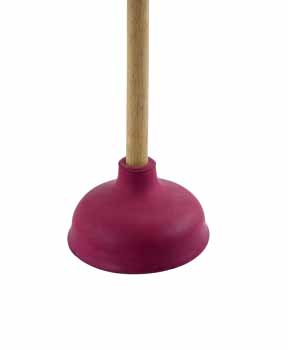Ways to Clear Your Outdoor and Indoor Drains
08/29/23
It may be easy to ignore a slow drain or a clog outside as long as you can still use your sinks and bathroom. But if you let that drain go, you could quickly end up with a messy situation like pooling water in your kitchen or bathroom – and the smells that go with it.
Any of your indoor or outdoor drains can become slow or clogged, leading to big and expensive fixes down the road. The best way to deal with them is to prevent them in the first place. Here are some tips to keep your indoor and outdoor drains clear.
What Are the Types of Indoor and Outdoor Drains?
There are three main plumbing systems in your home: potable water, storm drainage, and sanitary drainage, all with their own plumbing infrastructure.
Potable water is the water that comes into your home for drinking and bathing. Storm drainage is your outdoor drain systems, while sanitary drainage is the plumbing for water that’s been used, such as your flushed toilet water and the water that flows down your kitchen sink.
Any of these drains can be clogged by any number of things, including:
- Oil or grease
- Food debris
- Soap
- Human or animal hair
- Minerals from hard water
- Flushing products that shouldn’t be flushed
- Foreign objects
- Tree roots, dirt, moss, or leaves
5 Ways to Keep Your Drains Clear
While you may need a professional plumber to handle major clogs, here are some tips to clear your drains at home and prevent clogs from happening in the future:
1. Use Boiling Water
If your drain is clearing slowly and there’s no standing water in the sink, boiling water may help to dissolve fat or oil buildup. Just boil about a half-gallon of water and pour it into your drain slowly, then run the tap on hot for several minutes.
Boiling water is a good choice for many drains, but it’s not safe for PVC pipes. The high temperature of the water can cause the pipes to melt.
2. Try Dish Soap
Dish soap can break up grease that’s clogging your drain and get the water moving. You don’t need a lot of soap – just an ounce or so should be enough. Avoid pouring too much into your drain, which can solidify and cause a worse clog.
After you pour dish soap into the drain, pour boiling water into the drain and flush it with hot tap water.
3. Use a DIY Method
Chemical drain cleaners are many homeowners’ go-to solutions for clearing drains. They can be effective, but they wreak havoc on your pipes. A homemade solution of household products is a gentle, simple, and affordable option.
Here are the supplies you need:
- One cup of baking soda
- Three cups of boiling water
- One cup of lemon juice
Pour the mixture into the slow drain and allow the chemical reaction to clear out some of the debris. If you prefer, you can use baking soda and vinegar instead.
4. Try Drain Unclogging Tools
If your drain isn’t cleared by these methods, you can pick up a plastic drain cleaning tool at the local hardware store. These tools are widely available, inexpensive, and generally safe for your pipes. They work by grabbing onto debris with a barb that you can pull out, leaving your drain clear.
To use the tool, insert it straight into the drain as far as it will go, then pull it back out. It takes some patience to catch the debris and get it out, but you can also try twisting the tool a bit.
5. Try a Plunger
Plungers are an easy, safe, and effective way to loosen up clogs and clear your drain, but you have to do it correctly.
Bath sinks with a stopper will need to be removed before plumbing. Take out the stopper by reaching behind the drain plumbing with pliers and removing the stopper lever nut. Remove the sink drain stopper and replace the lever and nut, then plug the overflow drain hole by stuffing the corner of a cloth rag into it. This creates pressure in the drain that allows you to get a good seal for plunging.

Similarly, double-basin sinks will need one of the drains plugged to create a seal. For tub drains, remove the overflow drain cover with a screwdriver and plug the hole with a cloth rag.
With any drain, run some water until you have an inch or two of depth in the sink or tub. Place the plunger over the drain and make sure it’s flush against the bottom. Once you have a seal, move the plunger up and down several times without breaking the seal at the base.
If you have a slow drain or stubborn clog, don’t wait! Contact us at HELP to schedule your appointment!
Posted in: Plumbing
Learn More!
Offer Expires Soon




